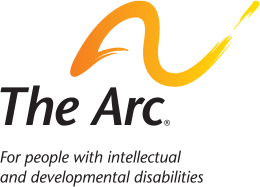Medicaid Expansion Saved Their Lives. Now Congress Wants to Cut It.
For millions of people with disabilities and their families, Medicaid isn’t optional. It’s the glue holding everything together. It’s the health care and therapies that help children grow. The prescriptions that manage chronic conditions. The daily support that helps adults with disabilities get out of bed, work, and participate in their communities. The safety net that allows caregivers to keep going day after day.
But now, Medicaid expansion, a part of the Medicaid program that offers insurance coverage for certain people, including people with intellectual and developmental disabilities, is under threat. A federal budget bill moving through Congress proposes nearly $800 billion in Medicaid cuts, with Medicaid expansion directly in the crosshairs.
What Is Medicaid Expansion and Why Does It Matter?
Medicaid expansion, introduced under the Affordable Care Act (ACA), gave states the option to extend coverage to more low-income adults, including people with disabilities, chronic health conditions, and caregivers who had long fallen through the cracks. Many of these people have very low incomes but make just enough to be outside of the Medicaid income requirements. Others have developmental disabilities that do not meet Medicaid’s disability-specific requirements. In the 41 states (including Washington, DC) that adopted it, Medicaid expansion opened the door to health care for millions who had nowhere else to turn.
Who Benefits From Medicaid Expansion?
Some lawmakers claim Medicaid cuts won’t hurt people with disabilities. But these real people share how Medicaid expansion has impacted their lives.
Eri From Massachusetts
 “My mother, an early childhood educator who worked with kids with developmental disabilities, died in 2012 because she couldn’t afford her asthma inhalers. By 2014, I was a teenager experiencing homelessness after losing my only caregiver. I had asthma, a severe mood disorder, and undiagnosed autism and ADHD, but I couldn’t afford health care or medication. Once Medicaid expansion happened, everything changed. I was finally able to receive care, go to college, and rebuild my life. Today, I’m employed, commercially insured, and still receive some Medicaid as a working adult with disabilities. I lost my mom before she could be helped, but expansion gave me a second chance. I’m living proof that it works.”
“My mother, an early childhood educator who worked with kids with developmental disabilities, died in 2012 because she couldn’t afford her asthma inhalers. By 2014, I was a teenager experiencing homelessness after losing my only caregiver. I had asthma, a severe mood disorder, and undiagnosed autism and ADHD, but I couldn’t afford health care or medication. Once Medicaid expansion happened, everything changed. I was finally able to receive care, go to college, and rebuild my life. Today, I’m employed, commercially insured, and still receive some Medicaid as a working adult with disabilities. I lost my mom before she could be helped, but expansion gave me a second chance. I’m living proof that it works.”
Monika From California
“I’ve never had a job that offered health insurance. And I never earned enough to pay for the high cost of insurance coverage or deductibles. Then Medicaid expansion came, and I finally got answers: my fatigue and severe joint pain were untreated lupus and rheumatoid arthritis. Now I get the care I need, and can keep caring for my dad, who has advanced Alzheimer’s and a brain tumor. My life and my family’s literally depend on Medicaid.”
What Happens If Congress Cuts Medicaid Expansion?
If Congress moves forward with these cuts, millions will lose access to care. Medicaid expansion has helped people:
- Get diagnosed and treated
- Access therapies that support their development
- Learn, work, and contribute to their communities
- Live safely at home instead of being institutionalized
Without it, we’ll see more uninsured people and more families pushed to the brink. And the people hit hardest? People with disabilities, caregivers, and low-income adults who are already navigating the most.
Is Medicaid Popular?
Yes, and public support is growing. New polling shows that 83% of Americans have a favorable view of Medicaid, up from 77% just months ago. That support only grows when people understand what’s at stake.
Medicaid Is Not a Handout. It’s a Lifeline.
When lawmakers say people with disabilities won’t be affected, they’re ignoring real people like Eri and Monika. People whose lives and futures depend on Medicaid expansion.
Their stories aren’t the exception. They’re reality.
We can’t afford to go backward—not now, not ever. Too much is on the line.
Read. Share. Take action before it’s too late. Urge Congress to protect Medicaid now.




























